
An Area Plan is a cross licence/ cross Hub collaborative framework to ensure economic recovery of oil and gas, whilst supporting the drive to net zero carbon by 2050, in a particular geographical area of the UKCS, based on the analysis of evidence.
Description
Opportunity for multiple Joint Ventures (Clair, Rosebank and Cambo) to collaborate to screen and deliver an area-wide low carbon power scheme, facilitating the delivery of MER and Net Zero for the area
Participants
- Clair - bp (Op & AP lead) / Shell / Chevron / Harbour
- Rosebank - Equinor (Op) / Ithaca
- Cambo - Ithaca (Op) - left WoSE in July 2023
Opportunity
- MER
- To assist in producing and delivering significant consented hydrocarbons from the area
- Carbon
- To significantly reduce operational emissions
- Other
- To facilitate the future development and delivery of unconsented hydrocarbon volumes from area
- Potential to extend scheme to include additional assets
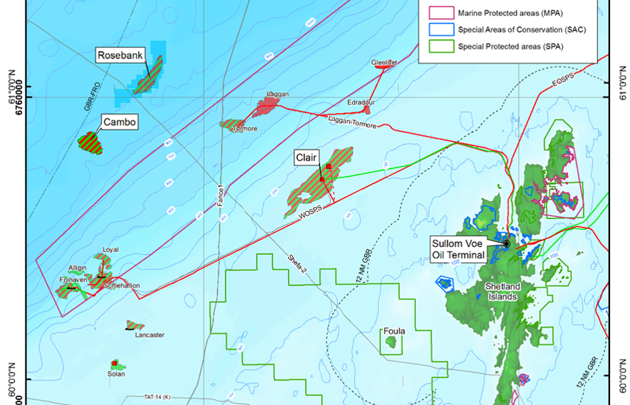
Description
Opportunity for multiple Joint Ventures to collaborate, screen and deliver strategically important gas into the UK in the short term (0-5 years)
Participants
- GLA - TotalEnergies (Op & AP lead) / Kistos / Ineos / Rockrose. (Laggan, Tormore, Edradour, Glenlivet)
- Victory - Shell (Op)
- Tornado/Spitfire - Ithaca (Op) / Shell
- Laxford/Scourie - Reabold (Op)
Opportunity
- MER
- To assist in developing, producing and delivering strategically important gas resources into the UK market in the short term
- Other
- To secure long-term future of gas infrastructure to serve future exploration opportunities (+5 yrs)
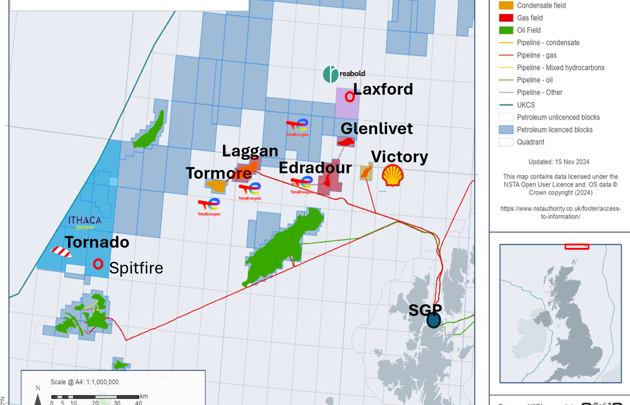
Description
Opportunity for multiple Joint Ventures, licensees and owners to collaborate, screen and deliver a development of the Quad9 area’s overlying gas cap, thus delivering strategically important gas volumes into the UK markets
Participants
- TotalEnergies (Op & AP lead) / Taqa / Sojitz / Apache / Nobel
Opportunity
- MER
- To assist in developing, producing and delivering strategically important gas resources into the UK market
- Carbon
- To deliver gas into the UK at a ‘world-leading’ carbon intensity

Description
Opportunity for multiple Joint Ventures (Bruce, Kraken and Mariner) to collaborate, screen and deliver an area-wide low carbon power scheme, facilitating the delivery of MER and Net Zero for the Quad 9 area.
Participants
- Bruce - Serica (Op & AP lead) / bp / TotalEnergies
- Kraken - Enquest (Op) / Waldorf
- Mariner - Equinor (Op) / Ithaca / NEO / ONE Dyas
Opportunity/Prize
- MER
- To assist in producing and delivering significant consented hydrocarbons from the area
- Carbon
- To significantly reduce the operational emissions
- Other
- Potential opportunity to screen a wide range of LCP technologies
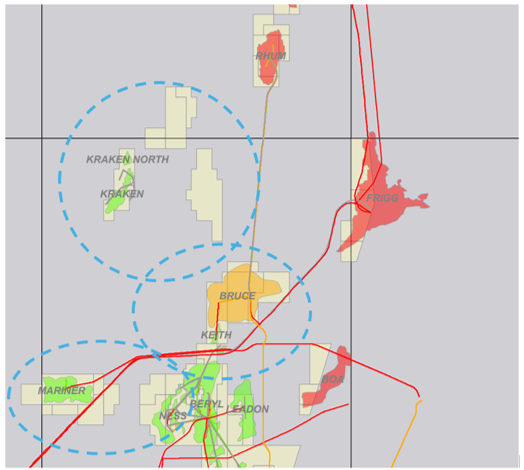
Description
Opportunity to re-route West of Shetland gas into the SIRGE pipeline thus securing a future gas export route once East of Shetland production ends (TBD).
Participants
- Clair - bp (Op) / Shell / Chevron / Harbour
- SVT - Enquest (Op) / CNR / Taqa / TotalEnergies / ExxonMobil / Dana / MOL / NEO / Clair owners
- SIRGE - NSMP (Op) / Ineos / Chevron / Ithaca
Opportunity/Prize
- MER
- To assist in producing and delivering significant consented hydrocarbons from the area
- Carbon
- To link currently separated gas systems, thus improving optionality in routing/utilising gas for lower carbon generation on existing, key long-life hubs
- Other
- To ‘Protect the West’ and facilitate future unconsented resource opportunities
- Strategically important in offering redundancy to current export route
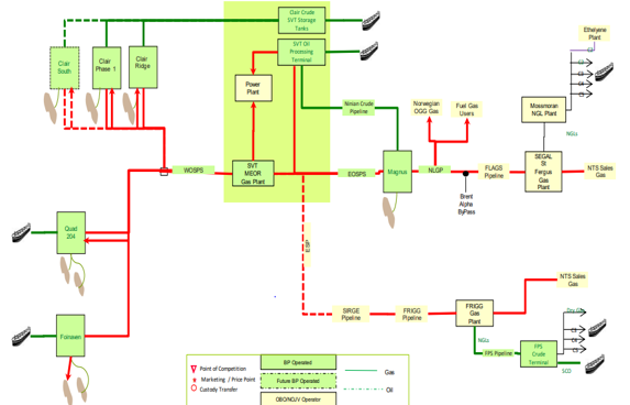
Description
Opportunity for future SVT users/owners/developers to collaborate and deliver:
- Fit for purpose low carbon terminal services post 2025
- Efficient, lower cost decommissioning of East of Shetland
- Potential repurposing of SVT site for new energy purposes
Participants
- Clair - bp (Op) / Shell / Chevron / Harbour
- SVT - Enquest (Op) / CNR / Taqa / TotalEnergies / ExxonMobil / Dana / MOL / NEO / Clair owners
Opportunity/Prize
- MER
- To assist in producing and delivering significant consented hydrocarbons from the area
- Carbon
- To enable opportunity to electrify terminal (lower emissions)
- Other
- To ‘Protect the West’ with long-term Clair Segregated Terminal (CST)
- Efficient EoS decommissioning
- New energy opportunities – Energy Transition
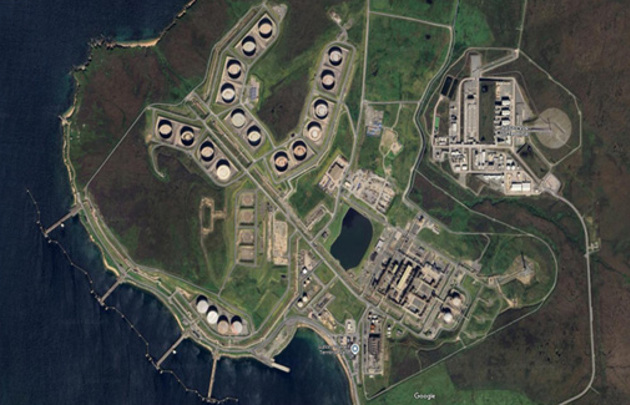
The NSTA is working closely with operators, licence holders and other interested parties to develop Area Plans across the oil and gas life cycle.
These integrate exploration, development, production, and decommissioning to ensure operations ensure economic recovery with the optimum use of infrastructure to extend asset life.
Area Plans, like industry, are evolving, with scopes of work now incorporating energy integration and net zero considerations; all in support of industry meeting the UK Government’s target of net zero by 2050.
Area Plans represent a shared view amongst industry participants of the optimal way to ensure economic recovery, whilst supporting the drive to net zero carbon by 2050, in a specific set of circumstances. For the majority of Area Plans, the NSTA will normally expect industry to lead on developing and delivering the plans.
The NSTA have developed Guidance (revised in November 2023) to aid the industry’s understanding of their responsibilities for developing Area Plans and help improve collaboration across the UKCS. As experience and practice develop, the NSTA will update and review this guidance.
Under the leadership of Steve Phimister, Industry Cultural Change Champion, industry have created Behavioural Guidelines to help those involved in Area Plans. These Guidelines provide advice, share insights from existing Area Plans groups and signpost to relevant tools and resources.
-
Industry Behavioural Guidelines for Creating Quality Area Plans : May 2018 PDF - 1mb
-
Industry Behavioural Guidelines for Creating Quality Area Plans : Supplement to Short Version : May 2019 PDF - 1mb
-
Industry Behavioural Guidelines for Creating Quality Area Plans : May 2018 PDF - 1mb
The NSTA is working closely with operators, licence holders and other interested parties to develop Area Plans across the oil and gas life cycle.
These integrate exploration, development, production, and decommissioning to ensure operations ensure economic recovery with the optimum use of infrastructure to extend asset life.
Area Plans, like industry, are evolving, with scopes of work now incorporating energy integration and net zero considerations; all in support of industry meeting the UK Government’s target of net zero by 2050.
Area Plans represent a shared view amongst industry participants of the optimal way to ensure economic recovery, whilst supporting the drive to net zero carbon by 2050, in a specific set of circumstances. For the majority of Area Plans, the NSTA will normally expect industry to lead on developing and delivering the plans.
The NSTA have developed Guidance (revised in November 2023) to aid the industry’s understanding of their responsibilities for developing Area Plans and help improve collaboration across the UKCS. As experience and practice develop, the NSTA will update and review this guidance.
Under the leadership of Steve Phimister, Industry Cultural Change Champion, industry have created Behavioural Guidelines to help those involved in Area Plans. These Guidelines provide advice, share insights from existing Area Plans groups and signpost to relevant tools and resources.
Area Plan stage-gate process

The NSTA has developed a stage-gate process (diagram above) to help industry develop and track Area Plans.
This can be adapted as appropriate to suit individual Area Plans.
It is the responsibility of industry participants involved in producing and implementing an Area Plan to seek their own assurance that their conduct is compliant with competition law and that an appropriate competition impact assessment has been completed prior to among other things sharing information. The NSTA set out the context and background to competition law in a competition and collaboration note published in November 2016.
If there is insufficient progress from industry during the work phase of developing an Area Plan, the NSTA may intervene to take the lead from industry – i.e. complete the analysis and share findings with relevant Industry parties, and consider whether to produce an NSTA Plan[1] based on the Area Plan. An NSTA Plan sets out the NSTA’s view of how any of the obligations of the Strategy may be met. The NSTA is likely to intervene to take the lead when:
- the process to develop an Area Plan is not proceeding as per the agreed Project Execution Plan (PEP) schedule; or
- the NSTA considers that the emerging Area Plan is not broadly consistent with the core objectives.
If any licensee believes they should be a legitimate participant of an existing Area Plan please contact the NSTA .
[1] NSTA Plan – a plan as described in the OGA Strategy that sets out the NSTA ’s views of how any obligations in the that Strategy may be met.


